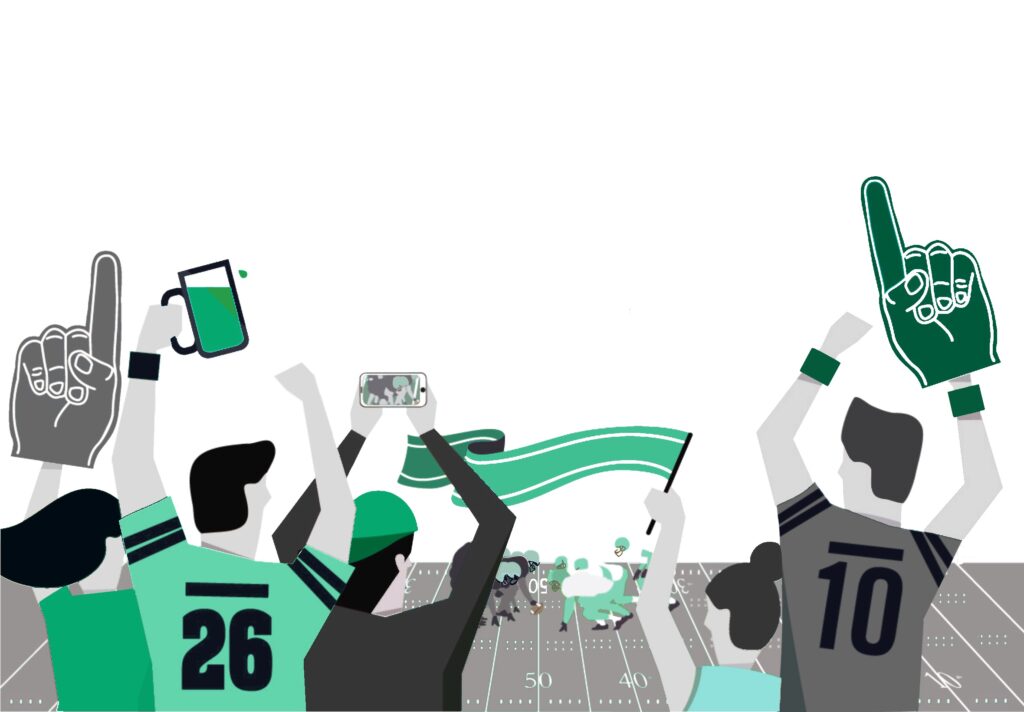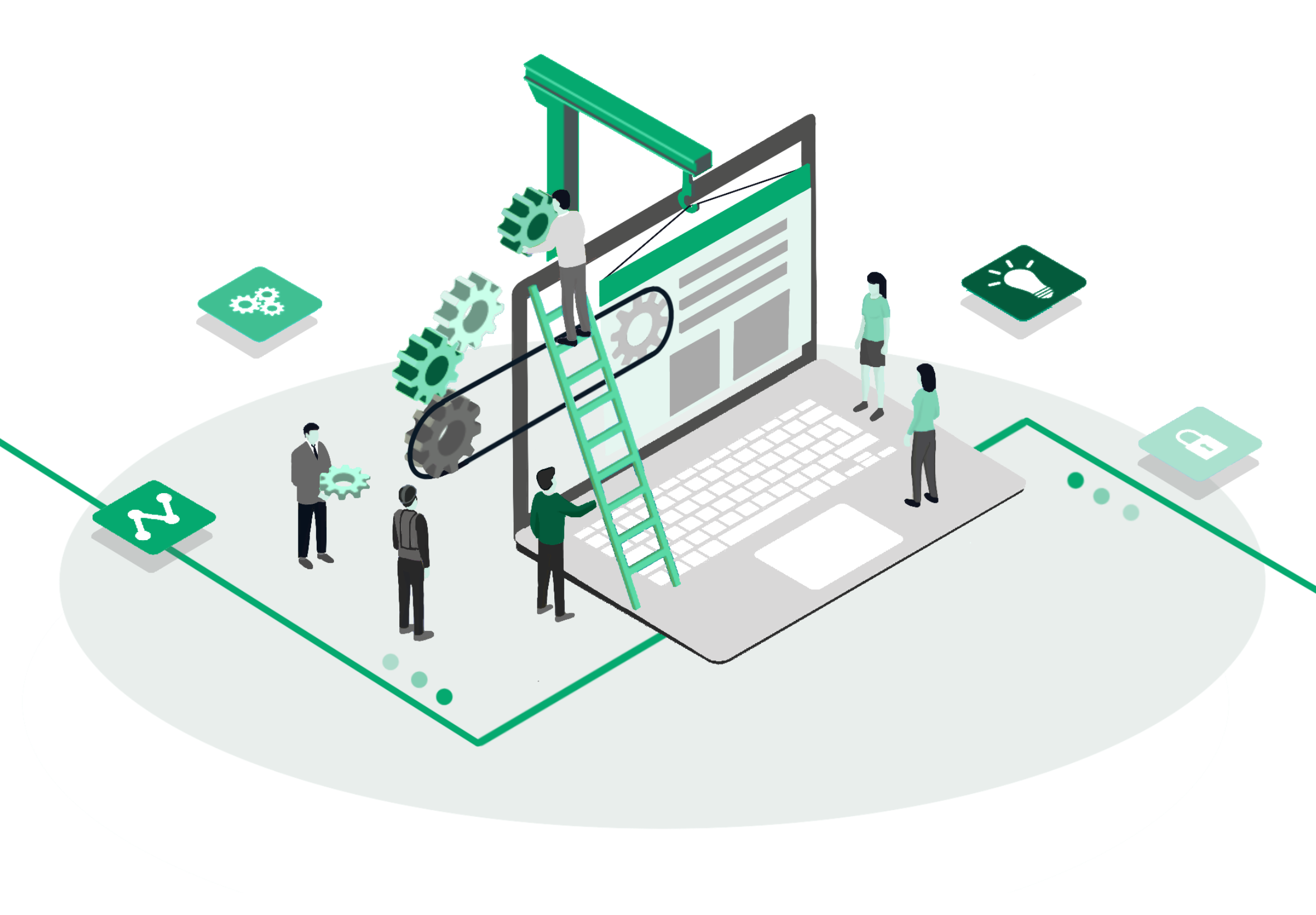
Which group of users can provide us with more excitement, passion, and raw emotion other than the wide world of sports? Very few areas of leisure and entertainment feature people pacing around in their living rooms, yelling at a television. Sports fans are simply a different breed altogether. They are deeply connected to the game, the athletes, and the storylines.
Therefore, designing a great digital experience that puts your product (or service) above the competition takes real care for your fans and their unique needs.
Start with “why”
Sports fans have tons of outlets already, digital and otherwise, to follow their favorite sports. You may be part of an organization looking to disrupt the competition for select offerings or a company looking to maintain your lead in the market. Getting the digital project off and running is the first step, and it begins with constructing an argument for what success looks like from a business standpoint. Is it to generate more revenue opportunities? Reach a new fan base? Encourage deeper engagement from fans with your product? Likely there are a few goals in mind. What is important is to stay true to why this project deserves the investment from stakeholders around you. Be sure to provide critical success factors and look to measure them throughout your process to know you’re on track towards real business value.
Embody the audience
The sports field presents a relatively easy, low-cost way of learning about these users — go be a sports fan! Discuss with folks in your company about which audiences make up your intended user base and go research them. Visit sports bars or arenas and talk to fans, invite them to participate in surveys, use friends and family, or experience being a fan yourself through the course of the season. When learning the finer details of a new sport, my favorite method is to turn to video games: there is a rhyme and reason for how the creators have constructed gameplay, the stats that show up, the game-break content, and of course, learning the rules of the game. If broadcast television is available (or we are in season), that is another perfect reference for good ideas. Finally, consider a longer study with sports fans — what does an average week of following sports look like vs. the during-game experience? Where are there moments of real excitement? Or pain? How are fans experiencing that with digital products? You will likely come up with various fan types you could be designing for, and the next step is to prioritize them accordingly.
Narrow the focus
Too many teams get caught up in wanting to “design for everybody”…or designing for the “ultimate fan” at the expense of ignoring the rest of the field. In the design process, this leads to endless meetings asking “what-if” questions. If your team has done its homework on fans, and understands what excites them and what challenges them — there are usually a few representative types to choose from for your product/service. They can be based on various dimensions, be it fan avidity, geography, or tech savviness to name a few. We typically create personas for our clients to base our decisions on, but whether these user types are defined by an in-house team or a specialized team, the point here is to select a few user types that become your target fans. How do you select? Go back to starting with why: which ones will best help your team accomplish its goals for the business? Do you need to design for all these users in the first version? Probably not. Pick the ones that have the greatest potential to accomplish your team’s goals and when you head to the concept phase, be sure to design from their inspiration.
Choose key scenarios
After selecting your target users, ensure you’ve placed them in the right scenarios. Your fans’ specific journeys with your product are vital in moving quickly through the design process. Again, the point isn’t to design for everybody…in every situation, the goal is to design the very best experience for the fans that will drive business value. These are strategic choices which means they should not be obvious yet be intentional. Every fan is going to want an “intuitive” experience. Perhaps only the handful of target fans will want an experience that selects and notifies them of close games across the league to pull them into the drama.
And, of course, fans could use various products in combination over the course of following a season or even a single game, so where is the right place for yours to come in? Choose those fan journeys that lead back to your goals. Are you designing for the fan that is following one favorite team? Multiple teams? Is your fan sitting in the airport killing time by opening your app? Are they watching the game with family at home? Are they in a sports bar? When will they use your product? How will they use it? In sports, fans experience a roller coaster of emotions leading up to a game, during a game, and immediately after. Break down those moments for prime design exploration.
Generate concepts
Having set your target fans and journeys, it’s time to start concepting new ideas. Invite other teammates to sketch with you! But be sure you are prompting those sketches with the appropriate target fans and their journeys. At this point, some design teams forget all you’ve done to get to this point. You know the fans you want to reach. You know their challenges to solve. Design artifacts like personas don’t have much value unless you use them to generate concepts. We like to print out big posters of our target fans to put around the room, complete with their goals, journeys, and pain points. You want the team to concentrate on how the product or service solves the needs of these target fans in those key moments. Use those fans as a lens by which you prioritize the concepts you want to develop further. This helps to avoid designing for everybody — this keeps the conversation squarely focused on user-centered design: your target fans.
The best part about concepting for sports fans is that ideas do not necessarily have to solve moments of pain and frustration. While you will undoubtedly run into solutions that do indeed solve pain and create more convenience, this is a chance to look for areas of delight and build excitement to increase better engagement.
Borrow from the best
No doubt that digital sports products and services can be a crowded space, from dedicated apps and sites to third parties that are providing access to games (like Twitter, YouTube, and Amazon). Everyone has their spin on a great user experience. Understand what others are doing so that your product has a chance to get noticed. I also believe in borrowing patterns from competitors that encourage good behavior. The classic YouTube app behavior allows users to watch a video (now a live game) and browse for other content simultaneously. This is a great example of handling multitasking if that is one of your goals for target fans. In addition, there are plenty of digital products outside of the sports industry that are solving very similar challenges. Take a look to see what else is out there, and don’t be afraid of creating new patterns yourself.
Create a regular cycle of testing
Make it a habit of testing new ideas with target fans, even in sketching form — sports fans will definitely tell you how they feel and what they need. It’s up to you to interpret that into actionable next steps in your design process. As you develop these concepts into higher fidelity, whether they be wireframes, visual design mockups, or even prototypes — keep testing them with target fans. It costs much less to do a quick test than to release a product that falls short of expectations. In addition, you will have more fuel for proving your product goals along the way.
With other industries and professions, often the toughest challenge is gaining access to truly understand the needs of users and embody them through our design process. But in sports, understanding the fan experience for digital products and services could not be easier. The key is to wrap those learnings around a process proving tangible value over time. The opportunities to design more rewarding experiences for fans continue to grow as technology improves. It’s up to us as designers to blend these technological advances with real user delight to push the organization to new heights.
Want to learn how Grand Studio can help with your next project and build clarity out of complexity?
We’re here to help!
